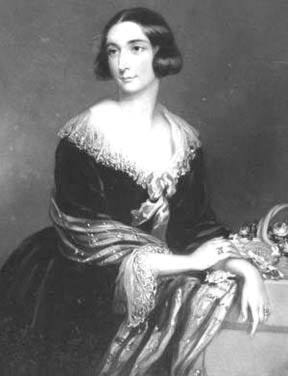Mike Selby
Charlotte Guest hated the aristocratic life. Born in 1812 to a British Earl, by age six she was already struggling against her expected role, which due to her sex denied her the education her brothers were receiving. Undaunted, Guest secretly met with her brother's tutors, becoming expert in ancient history and medieval literature, and fluent in French, Italian, Persian, Latin, Greek and Hebrew. When she came of age she scandalously married a Welsh "commoner," and quickly moved with her husband to his home country. Besides assisting him in his ironworks business, she took on numerous civic duties, opened up a teacher training school, and gave birth to ten children.
She also somehow found the time to indulge in her passion for medieval literature. Although Wales had little compared to England, what she found in various libraries was fascinating, most of it being completely new to her. Two books — 'Llyfr Coch Hergest' and 'Llyfr Gwyn Rhydderch' contained the oldest known record of ancient Welsh / Celtic prose, while a third book, 'Llyfr Du Caerfyrddin,' contained poetry. What astounded Guest was that all three books speak of King Arthur, predating England's legend by centuries.
'Llyfr Du Caerfyddin' (The Black Book of Carmathen), contains the following:
"There is a grave for March, a grave for Gwythur / a grave for Gwgawn Red-sword /
the world's wonder a grave for Arthur."
Known today as possibly "the best lines about King Arthur," this is actually all the 'Black Book' has to say about him.
Fortunately, 'Llyfr Coch Hergest' (The Red Book of Hergest), and 'Llyfr Gwyn Rhydderch' (The White Book of Rhydderch) said much more. Guest immediately began to translate these into English. These were published in 1837 under the title 'The Mabinogion.'
Her book was an immediate success in England, giving the Victorians a glimpse into Welsh mythology, as well as a much more interesting King Arthur. The Welsh Arthur lives in a bizarre land filled with giants, magic horses, witches, and all kinds of warrior-princesses.
The "warrior-princesses" found in 'The Mabinogion' are truly out of place when compared to all other Arthurian legends, where the women —even powerful ones — are always secondary and subservient. This has raised the question as to whether or not 'The Mabinogion' was originally written by a woman.
If it was, there is only one candidate who could have written it — Gwenllian ferch Gruffydd, a real princess herself. Born in 1097, Gwenllian was the daughter of King Gruffudd ap Cynan. When the Normans attacked in 1136, Princess Gwenllian raised an army and marched out to meet them. Although she was killed on the battlefield, her death inspired others to rise up against the Normans, and "Revenge for Gwenllian" became the new rallying cry for the Welsh.
Besides her bravery in battle, Gwenllian was one of the few literate (male or female) persons of her time who wasn't a monk. It would be great if she was indeed the author, but so far no one can say for certain. If she was, it would be two remarkable women almost a thousand years apart who brought us 'The Mabinogion'—"the world's finest arc of Celtic mythology."
Mike Selby is reference Librarian at the Cranbrook Public Library
